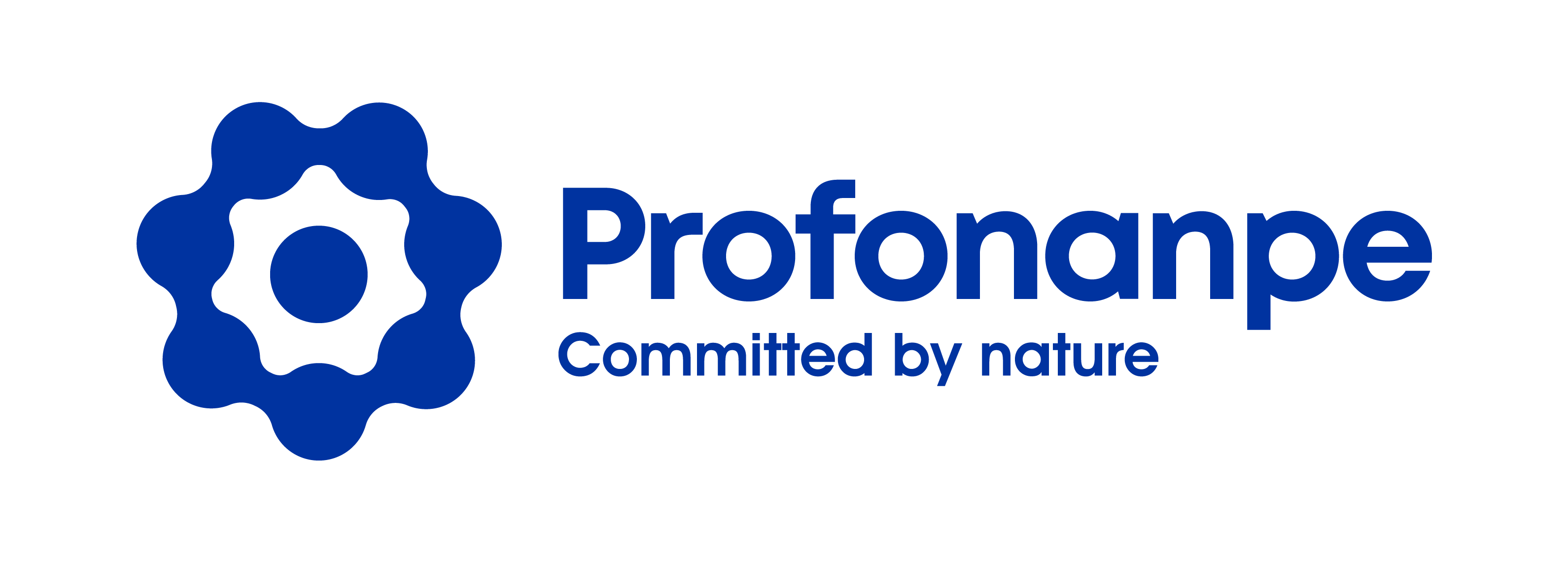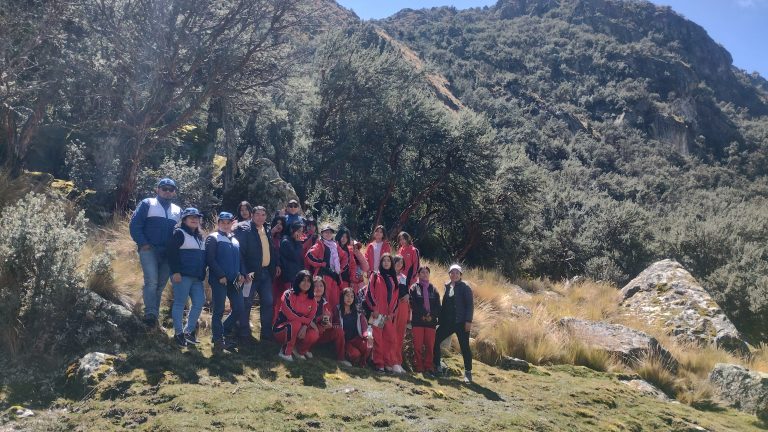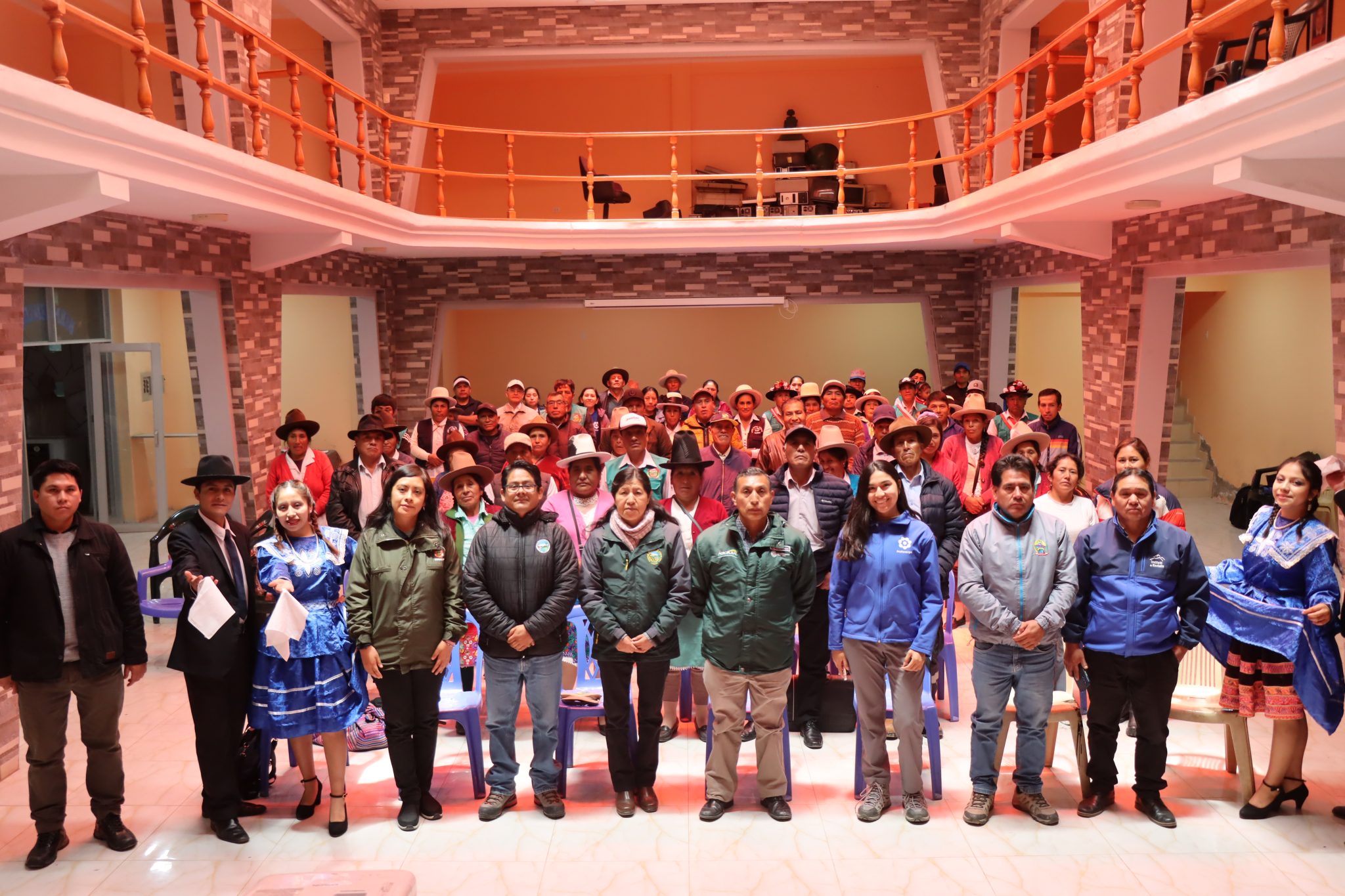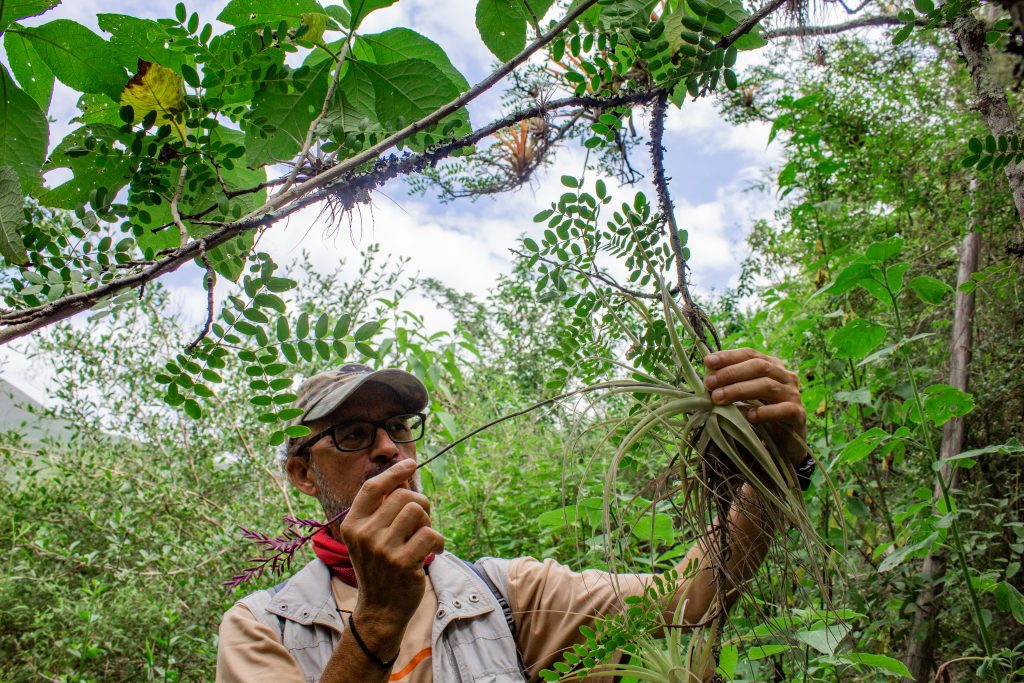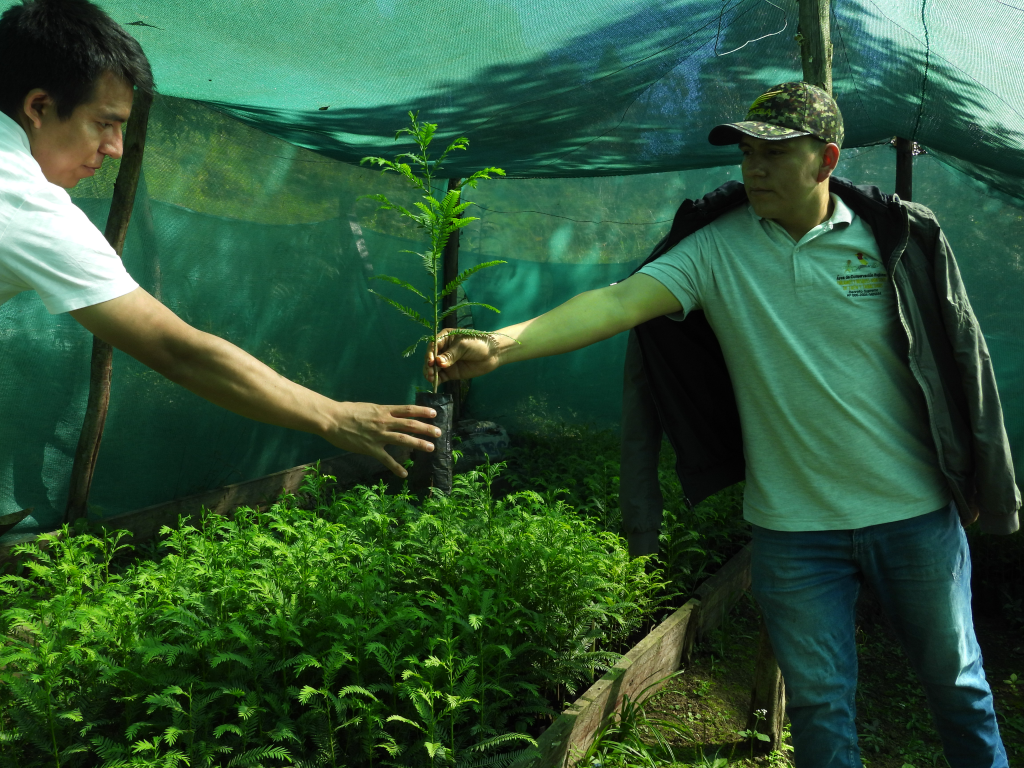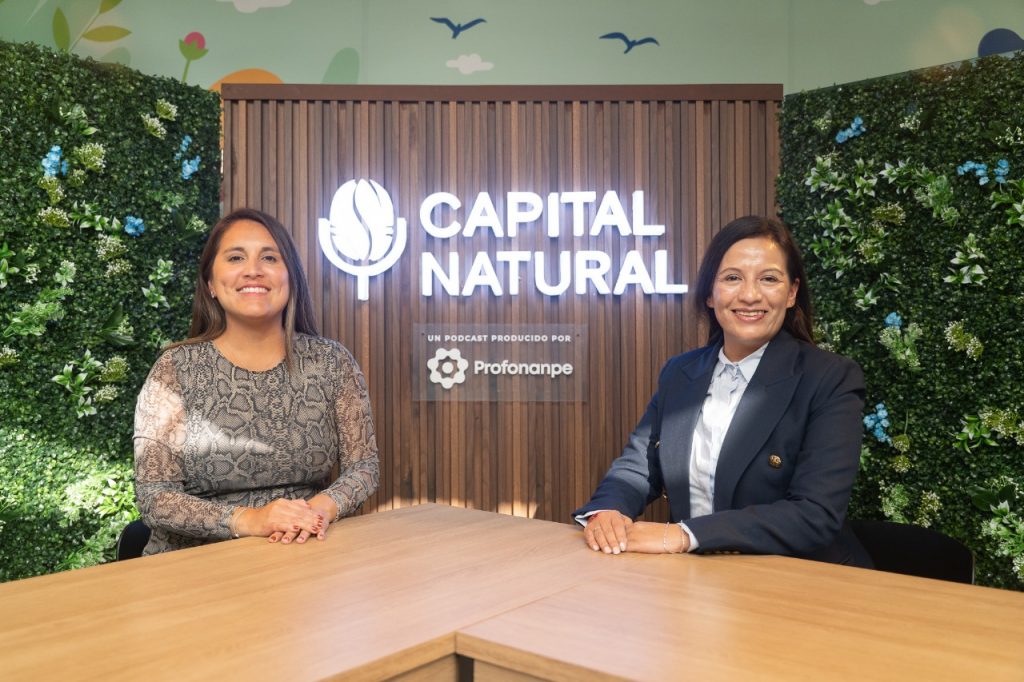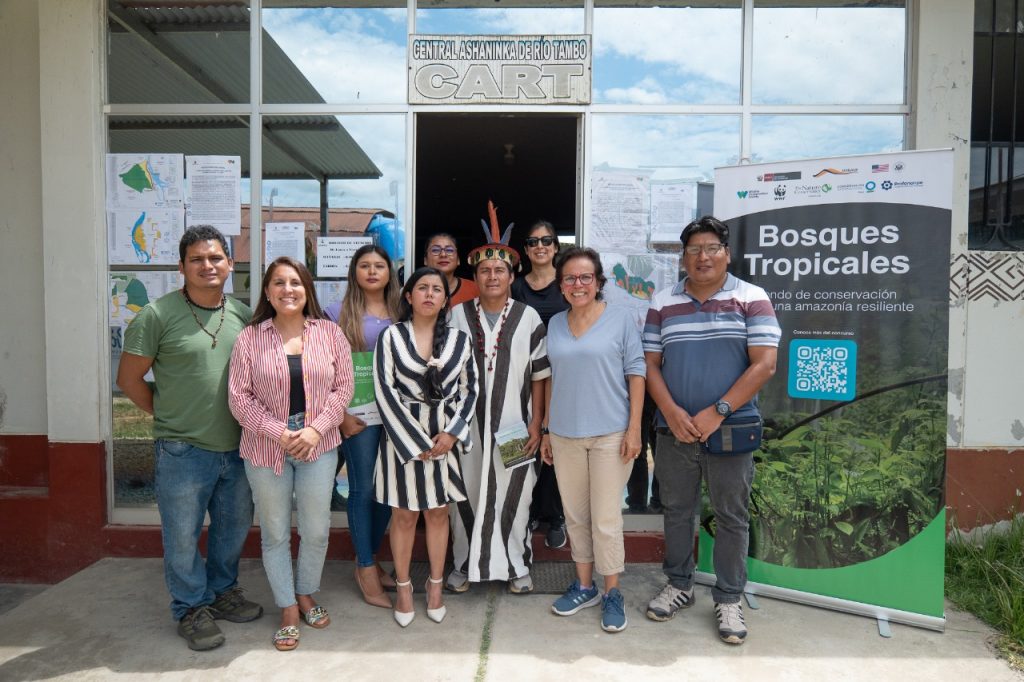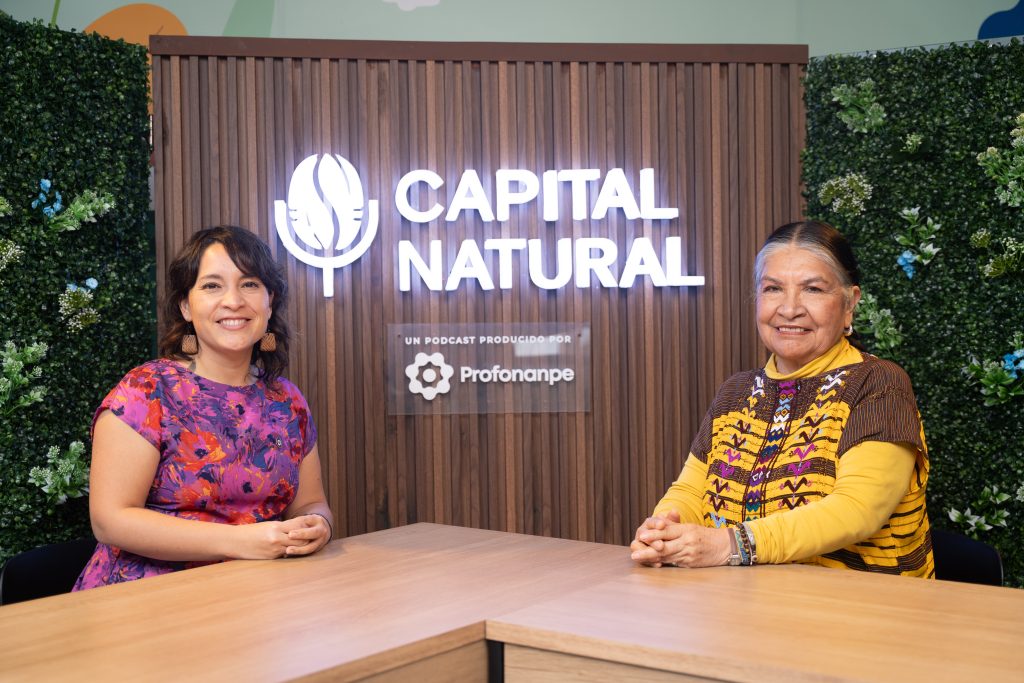Students from IE Micaela Bastidas de Tamburco present in the relict queuña forests – © IDMA
On April 16, more than 20 students and teachers from IE Micaela Bastidas de Tamburco participated in an educational day in the Mariño basin, an ecosystem representative of the proposed creation of the Rontoccocha Regional Conservation Area (RCA). The activity, organized by the Institute for Development and the Environment (IDMA) in coordination with EMUSAP Abancay, aimed to bring young people closer to ecological knowledge of the territory, strengthen their connection with the natural environment, and reflect on their role in environmental conservation.
Itinerary Planning
The field trip was coordinated with the school’s administration and teachers, who actively participated throughout the itinerary. The technical team from IDMA, along with EMUSAP staff, designed an educational route based on key points within the high Andean landscape, integrating environmental content, monitoring tools, and participatory activities.
Active student participation was encouraged throughout the trip through questions, observation exercises, and open dialogue. The approach was experiential, adapted to the school level, and focused on the link between high-altitude ecosystems and the water supply for the city of Abancay.
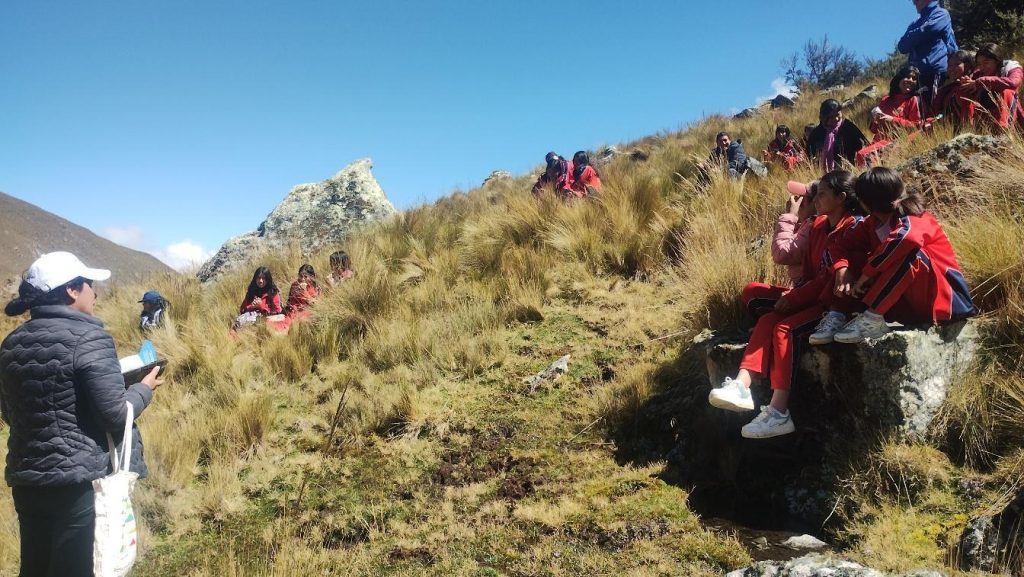
Visit to the relict queuña forest, grasslands, and high-Andean wetlands. – © IDMA
During the morning, the students visited the high-altitude camp, where they learned about the ‘Water Route’. Here, they were informed about the Mechanisms for Ecosystem Services Compensation (MERESE) and the proposed Rontoccocha Regional Conservation Area (RCA), a project implemented by IDMA. Subsequently, they proceeded to the relict queuña forests, where they understood their ecological importance and their role in local biodiversity. In the Rontoccocha ecosystem, they explored the restoration processes and the hydrological monitoring system implemented in the area.
The visit continued with an active break and the transfer to the Mariño viewpoint, where the issue of urban expansion, challenges for territorial planning, and the need for responsible water resource management were addressed. The day concluded with a final reflection session before returning to the city.
Outcomes of the Visit
The experience allowed participants to better understand the ecological value of the high-Andean wetlands, lagoons, and queuña forests, and to generate significant awareness about the importance of the Rontoccocha Regional Conservation Area (RCA), particularly in relation to the conservation of threatened birds and regional water security.
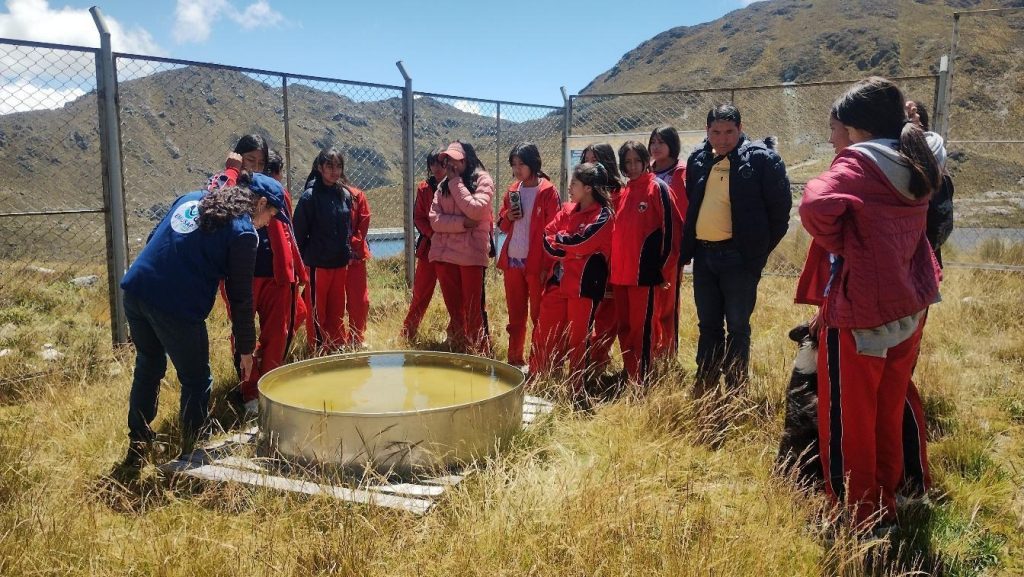
Visit to the hydrobiological monitoring station and socialization of the work developed by the MERESE program. – © IDMA
Furthermore, the links between formal education and territorial conservation were strengthened, highlighting the value of the MERESE program as a water management mechanism. It was confirmed that this type of integrative initiative allows students to internalize ecological and territorial concepts with greater clarity.
The use of accessible language, teacher support, and visual resources fostered significant learning, strengthening the environmental commitment of the youth.
A Future for the Rontoccocha ACR
The Rontoccocha RCA proposal is currently in its third stage, focused on socialization with the sectors that hold real rights within the proposed area. This phase seeks to promote spaces for dialogue and consensus-building, a step preceding the prior consultation with the 11 peasant communities recognized as indigenous peoples. This process will guarantee their informed participation and the respect of their collective rights, in accordance with the current regulatory framework.
The Conserva Aves Initiative is led by the American Bird Conservancy (ABC), National Audubon Society (Audubon), Bird Life International, Birds Canada, and the Network of Environmental Funds of Latin America and the Caribbean (RedLAC). The national partners are Profonanpe and ECOAN, leaders of the implementation in Peru, with funding from the Bezos Earth Fund.
Contact
Yerssey Caballero Palomino
IDMA Apurímac Program Director
directorabancay@idmaperu.org
Yasmine Rosas Damián
Project Coordinator
yasmine.rosas@idmaperu.org

